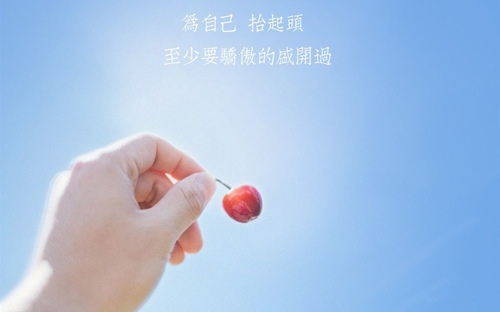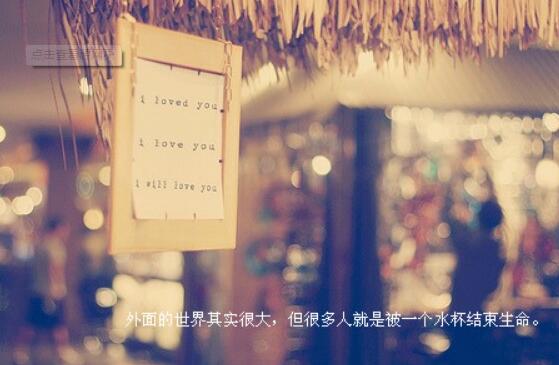
颐和园导游词
颐和园,占地约二百九十公顷,与圆明园毗邻以昆明湖、万寿山为基址,以杭州西湖为蓝本,汲取江南园林的设计手法而建成的一座大型山水园林,也是保存最完整的一座皇家行宫御苑,被誉为“皇家园林博物馆”,也是国家重点景点。
清朝乾隆皇帝继位以前,在北京西郊一带,建起了四座大型皇家园林。
乾隆十五年(1750年),乾隆皇帝为孝敬其母孝圣皇后动用448万两百银在这里改建为清漪园,形成了从现清华园到香山长达二十公里的皇家园林区。
咸丰十年(1860年),清漪园被英法联军焚毁。
光绪十四年(1888年)重建,改称颐和园,作消夏游乐地。
光绪二十六年(1900年),颐和园又遭“八国联军”的破坏,珍宝被劫掠一空。
清朝灭亡后,颐和园在军阀混战和国民党统治时期,又遭破坏。
1961年3月4日,颐和园被公布为第一批全国重点文物保护单位,与同时公布的承德避暑山庄、拙政园、留园并称为中国四大名园,1998年11月被列入《世界遗产名录》。
2007年5月8日,颐和园经国家旅游局正式批准为国家5A级旅游景区。
2009年,颐和园入选中国世界纪录协会中国现存最大的皇家园林。
关于颐和园的导游词
The Summer Palace Situated in the western outskirts of Haidian District, the Summer Palace is 15 kilometers (9.3 miles) from central Beijing. Having the largest royal park and being well preserved, it was designated, in 1960 by the State Council, as a Key Cultural Relics Protection Site of China. Containing examples of the ancient arts, it also has graceful landscapes and magnificent constructions. The Summer Palace is the archetypal Chinese garden, and is ranked amongst the most noted and classical gardens of the world. In 1998, it was listed as one of the World Heritage Sites by UNESCO.Constructed in the Jin Dynasty (1115-1234), during the succeeding reign of feudal emperors; it was extended continuously. By the time of the Qing Dynasty (1644-1911), it had become a luxurious royal garden providing royal families with rest and entertainment. Originally called 'Qingyi Garden' (Garden of Clear Ripples), it was know as one of the famous 'three hills and five gardens' (Longevity Hill, Jade Spring Mountain, and Fragrant Hill; Garden of Clear Ripples, Garden of Everlasting Spring, Garden of Perfection and Brightness, Garden of Tranquility and Brightness, and Garden of Tranquility and Pleasure). Like most of the gardens of Beijing, it could not elude the rampages of the Anglo-French allied force and was destroyed by fire. In 1888, Empress Dowager Cixi embezzled navy funds to reconstruct it for her own benefit, changing its name to Summer Palace (Yiheyuan). She spent most of her later years there, dealing with state affairs and entertaining. In 1900, it suffered again, being ransacked by the Eight-Power Allied Force. After the success of the 1911 Revolution, it was opened to the public.Composed mainly of Longevity Hill and Kunming Lake, The Summer Palace occupies an area of 294 hectares (726.5 acres), three quarters of which is water. Guided by nature, artists designed the gardens exquisitely so that visitors would see marvelous views and be amazed by perfect examples of refined craftwork using the finest materials.Centered on the Tower of Buddhist Incense (Foxiangge) the Summer Palace consists of over 3,000 structures including pavilions, towers, bridges, and corridors. The Summer Palace can be divided into four parts: the court area, front-hill area, front-lake area, and rear-hill and back-lake area.Front-Hill Area: this area is the most magnificent area in the Summer Palace with the most constructions. Its layout is quite distinctive because of the central axis from the yard of Kunming Lake to the hilltop, on which important buildings are positioned including Gate of Dispelling Clouds, Hall of Dispelling Clouds, Hall of Moral Glory, Tower of Buddhist Incense, the Hall of the Sea of Wisdom, etc.Rear-Hill and Back-Lake Area: although the constructions are fewer here, it has a unique landscape, with dense green trees, and winding paths. Visitors can feel a rare tranquility, and elegance. This area includes scenic spots such as Kunming Lake and Back Lake , which presents a tranquil beauty, Garden of Harmonious Interest , built by imitating the layout of Southern China’s classical gardens, and Suzhou Market Street, endowed with a strong flavor of the water town Suzhou.Court Area: this is where Empress Dowager Cixi and Emperor Guangxu met officials, conducted state affairs and rested. Entering the East Palace Gate, visitors may see the main palace buildings: the Hall of Benevolence and Longevity served as the office of the Emperor, the Hall of Jade Ripples where Guangxu lived, the Hall of Joyful Longevity, Cixi's residence, the Garden of Virtue and Harmony where Cixi was entertained, Yiyun House , where once lived the Empress Longyu, and Long Gallery, which measures the longest in Chinese gardens.Front Lake Area: covering a larger part of the Summer Palace, opens up the vista of the lake. A breeze fluttering, waves gleam and willows kiss the ripples of the vast water. In this comfortable area there are the Eastern Bank and Western Bank, Seventeen-Arch Bridge, Nanhu Island, the largest island in Summer Palace, Bronze Ox, an imposing statue beside the lake, and Marble Boat, built in western style with elaborate decorations . On the western bank float six distinct bridges amongst which the Jade-Belt Bridge is the most beautiful.
颐和园导游词
各位游客大家好,欢迎你们到北京颐和园来游玩,我是颐和园旅游公司的导游,大家可以称我为“小廖”,非常荣幸能为大家提供服务,希望在我的陪伴下,能让您度过愉快的一天,也能让您真正感受到颐和园这座皇家园林的魅力。
颐和园位于北京西郊,原为封建帝王的行宫花园。
原来的名字叫好山园。
清乾隆时改为清漪园。
1860年被英法联军所毁。
1888年慈禧太后挪用军费重建,改名颐和园。
颐和园总面积290万平方米,拥有宫殿园林建筑3000余间,湖水面积约占四分之三。
园中景象万千。
5万寿山丛林葱郁,昆明湖碧水荡漾,构成一幅美丽的皇家园林画卷,是世界著名的旅游胜地。
我先带大家去长廊游玩。
进了颐和园的大门,绕过大殿,就来到有名的长廊。
长廊长728米,分成273间。
每一间的横槛上都有五彩的画,画着人物、动物、花草、风景,几千幅画没有哪两幅是相同的。
长廊两旁栽满了花木,这一种花还没谢,那一种花又开了。
其中人物故事画最引人注目。
那就请游客们细细观赏吧
穿过长廊,就来到万寿山脚下,万寿山地处颐和园的中心部位。
南临昆明湖。
山上建有佛香阁、排云殿等,山上树木葱浓,宫殿金碧辉煌,是宫庭功能、宗教功能、园林功能的集中体现。
这里建筑宏伟,风景秀丽,充分展示了皇宫御苑的皇家气派。
各位游客不妨亲自登山,既锻炼了身体,又能沿途欣赏好风景。
接下来我向大家介绍昆明湖。
昆明湖面积约200多万平方米。
湖边围着长长的堤岸,湖沿有石舫,湖上有好几座式样不同的石桥,其中十七孔桥最引人注目,桥上有上百根石柱,石柱上都刻着各种各样、天然成趣的数百只狮子,它们率真大胆,美不胜收,有的正在绣球上灵巧地做着各种优美的动作,有的几只狮宝宝嬉戏在狮妈妈周围,欢蹦乱跳,尽情玩耍,狮妈妈慈爱地抚摸着小宝宝,眼里流露出欢欣的喜悦,金色的阳光洒在这些狮子们身上,像给予它们一种生命力,传续着人间动人的故事。
走在桥上,可以看到湖岸柳树成行,湖光山色,风景迷人,是颐和园最有名的景点。
走过十七孔桥,就可以观赏湖中小岛上的绚丽风景,那里别有一番情趣。
颐和园的美景真是说也说不尽,道也道不完,用“举世无双,独一无二”来形容她一点也不过分,她就像一颗璀璨的明珠,她的大气,她的精致,她浓郁的人文底蕴深深地吸引着中外游客。
小廖我真诚地希望您能在这得到美的享受,祝您玩得开心,游得尽兴。



